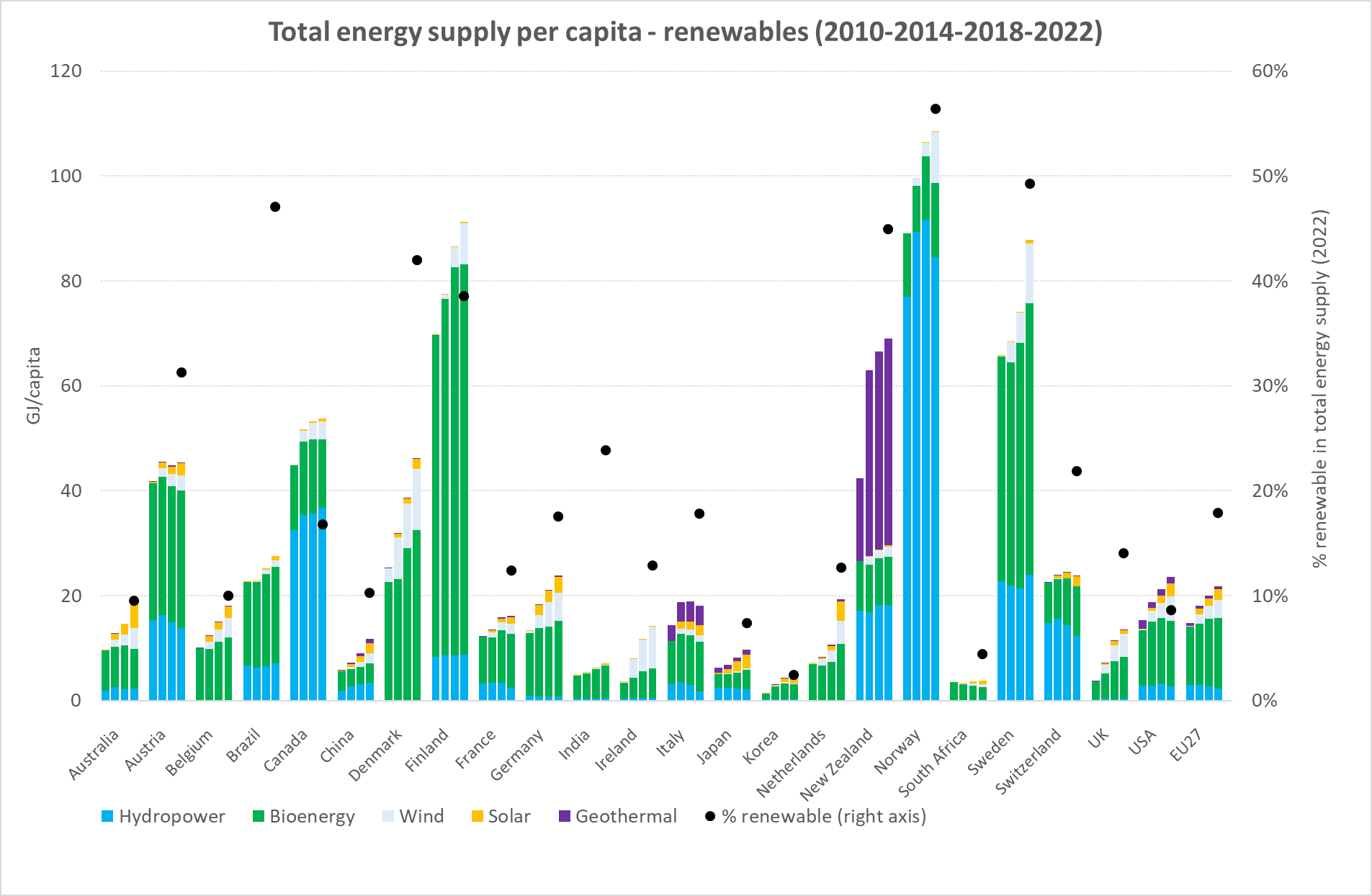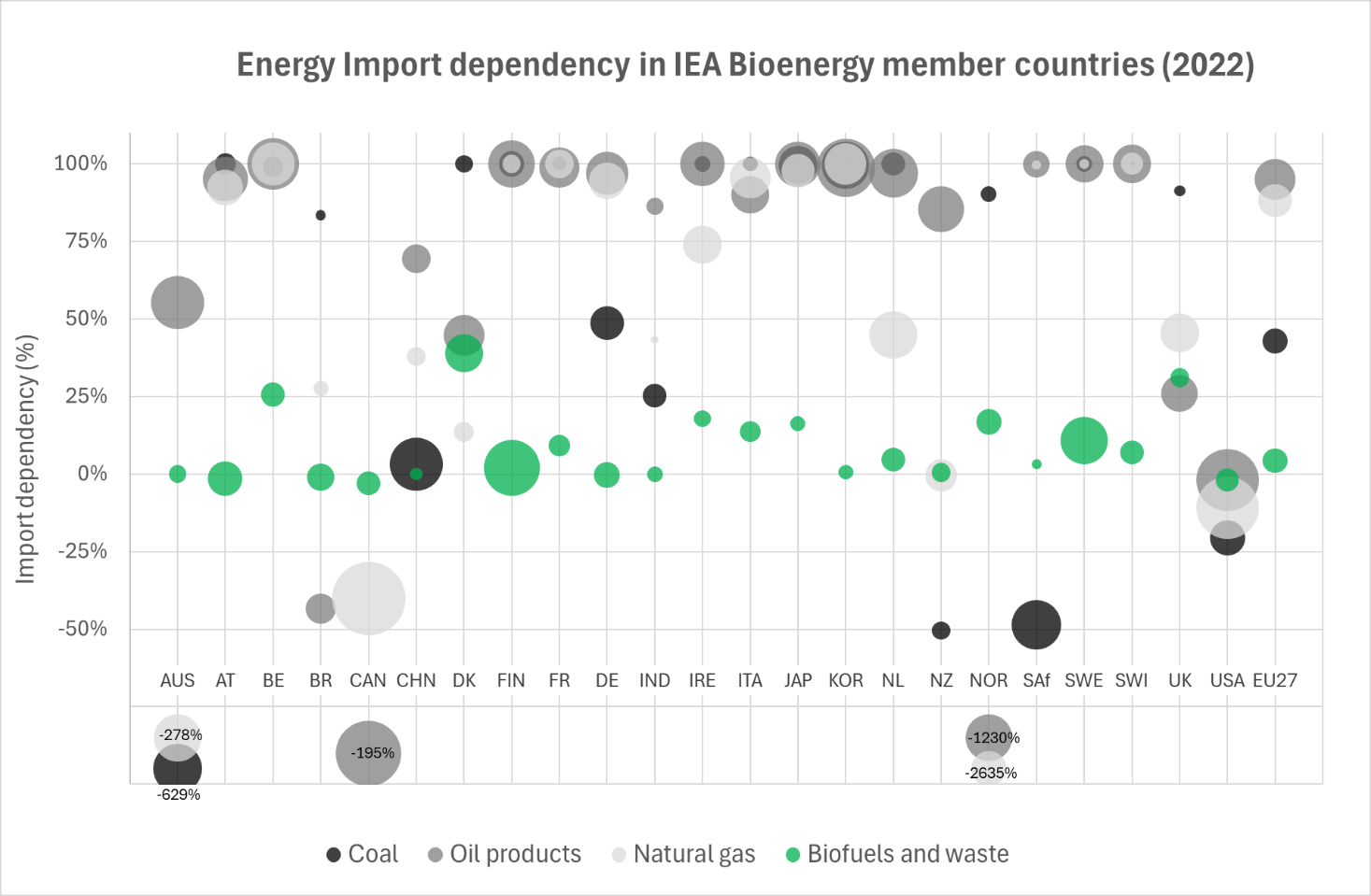Trends in bioenergy development in countries around the world
Solid biomass remains the dominating type of biomass used for energy in all countries, but its level is stabilizing. Liquid biofuels and biogas/biomethane are on the rise.
For the SAF platform, we have prepared an overview based on the rereports show the trends of bioenergy in the IEA Bioenergy member countries up to 2022, highlighting the role of bioenergy in their energy mix. The final report provides a comparative overview of the results for different countries. Here are the main points from it.
Shares of different types of fuels
Oil has a substantial and relatively stable role in all countries, particularly in relation to its use in transport. There is a continuing decreasing trend of coal in many countries, particularly in Europe and North America.
Between 2014 and 2021, most countries had an increase of natural gas use. The invasion of Russia in Ukraine in February 2022 – and the associated countermeasures to reduce imports of Russian gas and oil — led to a spike in natural gas prices and a substantial reduction of the use of natural gas in Europe.

The highest shares of renewable energy (>30%) in total energy supply in 2022 are reached in Norway, Sweden, Brazil, New Zealand, Denmark, Finland and Austria. In Brazil, Finland, Denmark and Sweden, this is largely through bioenergy.
Energy security
In contrast to fossil fuels, for bioenergy carriers overall net import dependency is between 0 and 20% for most countries, and the main production is derived from domestic resources.
In countries with substantial levels of bioenergy — for example Austria, Brazil, Denmark, Finland and Sweden — bioenergy has made a major contribution to energy security, reducing their reliance on fossil fuel imports.
The European Union had an overall fossil fuel import dependency of 82% in 2022. This makes Europe’s energy supply and economy highly vulnerable. The production of bioenergy carriers in the EU is in fact at similar level as the combined production of crude oil, natural gas and coal in the EU.

Bioenergy potential in different countries
Each country has specific characteristics impacting their potential for bioenergy and other renewables. Country size and population density, as well as topography, climatic conditions and land use distribution are particularly important.
Countries with low population density tend to have higher potential availability of domestic biomass resources, while countries with high population density and/or strong industry presence tend to rely much more on imports for their energy and resource requirements.
Read the full material with a chapter on the role of bioenergy in different energy sectors on the SAF platform.
We remind you that UABIO is a partner of the Sustainable agribusiness platform (SAF).
SAF is a communication platform that brings together agribusiness stakeholders and aims to establish strong links between market players and introduce sustainable approaches in agriculture. For this platform, our team prepares verified professional content on the bioenergy sector.


